PUBLISHER: The Henneberry Company, Chicago and New York, 1901-1919
ABOUT: William P. Henneberry was a partner with Michael A. Donohue in the firm of Donohue & Henneberry from 1871. That firm began to dissolve in 1898-1899, perhaps because a younger generation in each family was eager for new opportunities. Henneberry established his own firm, as described here, opening in 1901 with an agressive line of newly designed reprint editons. His son, George F. Henneberry, played a major role, and sold the firm to John Cuneo in 1919. Donohue -- perhaps more accurately the Donohue family -- reorganized first and briefly as Donohue Brothers, but by 1901 the firm emerged as M. A.Donohue & Co. surviving to the 1960s be become perhaps the longest firm to be controlled by a single family in U.S. publishing history; by 1915 it was almost entirely invovled exclusively with books for children.
"Another printer who became a major Chicago name in the field should be mentioned, although he was not an "old" publisher, with antebellum roots. John Cuneo was, in fact, only twenty-one in 1907 when he bought the bankrupt bookbinding business of Jenkins & George, changed its name to John F. Cuneo Co. and made it so successful that at the end of the First World War, in 1919, he took over the Henneberry Co., a large printing and bookmaking concern, calling it the Cuneo-Henneberry Co. Four years later, he acquired the Sears printing plant and formed a separate company, the Cuneo Printing Corporation, and it was these organizations which became the basis of a printing empire encompassing Chicago, New York, Philadelphia and Milwaukee." (Tebbel).
The Henneberry Company first appears in the Lakeside Chicago city directories in 1901, located at 409-429 South Dearborn. In 1902, the firm's address is given as 552-556 Wabash Avenue, in 1903-1904 as 554 Wabash, 1905-1906 as 5th floor, 554 Wabash, and 1907 as 552 Wabash Avenue. There are no entries under "publishers" 1908-1913; in 1914-1917 the firm appears under the "bookbinders" heading as "printers and edition binders" at 1139 South Wabash. In 1923 George F. Henneberry is listed as President of Cuneo-Henneberry Company. The Henneberry Company and M.A. Donohue & Co. shared the same address in 1901, with The Henneberry Company then moving to new quarters.
George J. Knott. “Chicago, Ill.” The Typographical Journal, Official Paper of the International Typographical Union of North America. (Indianapolis, Ind.) Volume 46 ([June?] 1915), p972: "William P. Henneberry on May 1 completed fifty years in the bookbinding and printing business in Chicago. He celebrated the day by remembering fifty of his oldest employes [sic], arranging to give them each an insurance policy for $1,000, with an old age fund and disability features. “Mr. Henneberry set himself the problem of figuring out the wisest way to recognize the good work of his employes,[sic]” said Mr. Corbett, the actuary who completed the arrangements, “and to give them some substantial evidence of his interest entirely beyond and outside of their regular pay. He wanted it to be permanent, not merely a pleasure of the day, but something which would grow in significance and value. He often has thought that if death suddenly and unexpectedly should claim any of them he would like to do something for their families or nearest friends. Then, too, he has looked forward to the time when they might grow old in the service of the Henneberry Company. In order to make the benefit absolutely sure he has had the scheme underwritten and guaranteed. The Henneberry Company will pay the premiums, and the policies are assigned to the company.” / Twelve printers were among the number who received a policy. / William P. Henneberry got his first job as bookbinder on May 1, 1865. After his employers' shop was destroyed in the Chicago fire he started in business for himself, on October 16, 1871. His first “big job” was the binding of receipts and note books for a printer. He went after other jobs, and gradually built up the business. After some time the firm of Donahue & Henneberry was formed. In 1901 the present firm was organized and the building at Twelfth street and Wabash avenue erected. W. P. Henneberry is president, George F. Henneberry, his son, vice-president, and W. P. Henneberry, jr., is secretary. The founder of the big bookbinding and printing house was born in Chicago in 1848. He was the first pupil enrolled in the old Foster school, and was a classmate of Melville Stone, secretary of the Associated Press; Charles Comiskey, the famous ball player; Mrs. Ella Flagg Young, superintendent of the Chicago schools; Robert D. Shepherd and others. When 8 years old he sold papers to the residents at the extreme north end of the town, Division street, and while attending the Chicago high school he was distributer for the Chicago Times in the district on the southern outskirts of the city, now the vicinity of State and Twenty-second streets."
The International Bookbinder v3 (1902), p74:"This [viz., "capitulation" of M.A. Donohue and W. B. Conkey to unionization and dissolution of George M. Hill] leaves Chicago with really only one firm bucking organized labor in our line, with another one, viz., Henneberry Company, who, after the separation from Donohue, have erected a building and threatened to run a non-union plant, which we are trying our utmost he shall not do and would warn all bookbinders to stay away from this city until such time as things are settled. / Fraternally, OTTO F. WASEM, Sec.-Treas. No. 8.
The Typographical Journal, Official Paper of the International Typographical Union of North America. (Indianapolis, Ind.) Volume 46 [Nov.?] 1915 vol 47 p679: "Work has been started on a six-story and basement building of reinforced concrete and steel at the southeast corner of Twenty-second and Grove streets, with about 30,000 square feet of ground area, to cost $250,000. The structure is being erected under a lease agreement with William P. Henneberry for the occupancy of the Henneberry Company, printers and binders. The floors will be so built as to enable the lessees to use any of them, especially the lower ones, for the company's large presses. The building and land has been leased by Mr. Hoyt to Mr. Henneberry for a term of ninety-nine years at a yearly rental of $18,000. The Henneberry Company expects to move into the new building on April 1, 1916, having outgrown its plant at 1139 South Wabash avenue, where it has been for the last twelve years.
Chicago Irish Families [database online] (Provo, UT: Ancestry.com, 1998, 2000), quoting The Chicago Citizen, 1883-1909, obituaries, marriage and social notices provides the following information: "Henneberry, Mary, nee Burke, mother of Fr. Francis S. Henneberry of St. Pius Church, and W. P. Henneberry of Donohue & Henneberry, printers, died at the residence of the former, 884 South Ashland Ave. on June 26. She had been confined to her bed for several weeks, suffering from a complication of diseases which commenced with grip and ended in heart failure. She was born in Cashel, Co. Tipperary in Sept., 1812 and came to this country in 1835. She made her home in New York for two years, and in January, 1838 was married in that city to John Henneberry, an old acquaintence in Ireland. In 1844 the family moved west, coming via the Erie Canal as far as Buffalo. At that city they boarded the steamer " Missouri" intending to locate in Milwaukee, but while on the way changed their mind and came to Chicago instead. For two years the family lived on Kinzie street, removing to the northwest corner of Polk and Clinton where they resided until burned out in the Fire of 1871.
"Mr. Henneberry died in 1858, leaving his widow with eight children to support. Three sons survive the mother, two living in Chicago and Joseph S., on a ranch in Montana. Those dead, are Thomas H., the eldest, who was superintendent during the Civil War of the government express company, known as Parker's Express, and was stationed at Little Rock, AR; James E., born in New York in 1841 served on the gunboat " Essex" and participated in all the engagements with Admiral Porter. Subsequently he was appointed to a position in the Chicago post office, and later served as Secretary of the Chicago Grain and Provision Call Board until the time of his death in March, 1888. He left a wife and four children.; John F. who served in the 34th NJ regiment, M.C. Henneberry who was connected with the Chicago Times for 27 yrs., being its commercial editor for twenty years, and the only sister, Mary Elizabeth who died a month after her father's demise in 1858.
"Since the Great Fire, Mrs. Henneberry has divided her time with her two sons, but for the past fourteen years she has lived with Fr. Henneberry. She was the first member of St. Mary's Church, which was the first Catholic church in Chicago. Funeral occured from St. Pius Church to Calvary, and was one of the largest witnessed in the city for quarter of a century. July 3, 1897, March 31, 1888."
LUCILE’s ISSUED BY The Henneberry Company:
1901 PTLA: Henneberry's Illustrated New Century Library of Standard Books by Popular Authors. This series is printed from new large type on a superior quality of cream wove paper made expressly for this series. Illustrated with fine line half-tone and other engravings by eminent artists. 12mo, cloth, designs in gold on side and backs, illuminated titlepages, gilt tops, printed wrapper. Price, per volume, $1.00. [Includes Lucile; cut of four bindings].
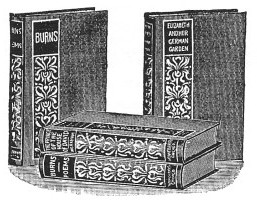
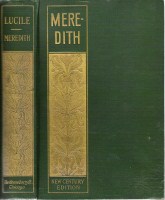
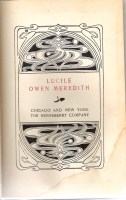
Henneberry's Illustrated Padded Leather Poets. Printed from large, new open-face type, on a superior quality of cream-wove paper, with beautiful half-tone illustrations by eminent artists, printed on enamel stock, 12mo, embossed seal-leather, illuminated title pages, round corners, red under gold edges, silk ribbon bookmarks, superb cover designs, with medallion of authors and titles in gold. Each in box. Price, per volume, $1.50. [Cut of bindings, including Meredith; Lucile also offered].
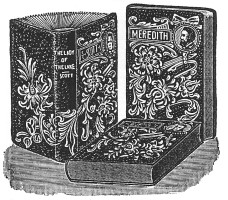
Henneberry's Illustrated Gilt Top Poets. Printed from new plates, large type, on an Extra No. 1 wove paper, made especially for this series. Each volume is illustrated with many full-page, half-tone engravings made especially for this series by eminent artists; 12mo, cloth, cover stamped in full gold on side and back, from new and original designs, illuminated title pages, gilt-tops, printed wrappers. Price, per volume, $1.00. [Cut of three bindings; design appears to be same as New Century Library].
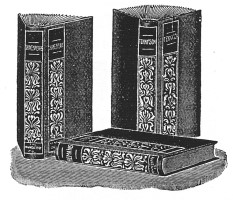
Henneberry's Favorite Medallion Poets. Illustrated. Printed from new large open-face type, on an extra quality of wove paper, embellished with numerous illustrations, especially made for the series. 12mo, white cloth, superb cover-designs in gold, with portrait of author in solid gold leaf. Illuminated title page, full gold edges. Silk ribbon bookmarks. Each in a box. Price, per volume, $1.25. [Cut of three bindings].
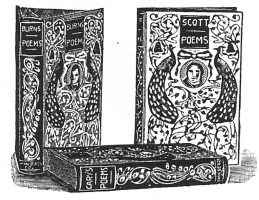
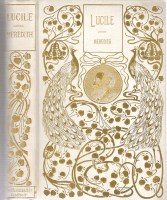
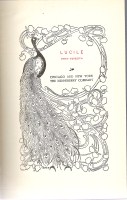
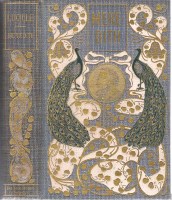
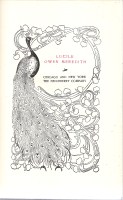
Not identified to edition:
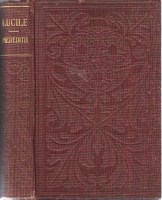
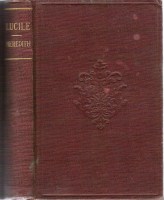
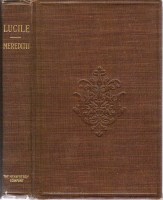
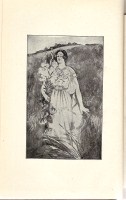
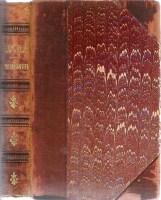
16mo editions:
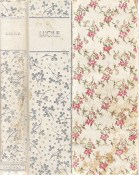
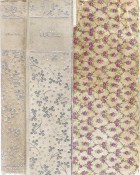
Last revised: 3 December 2022